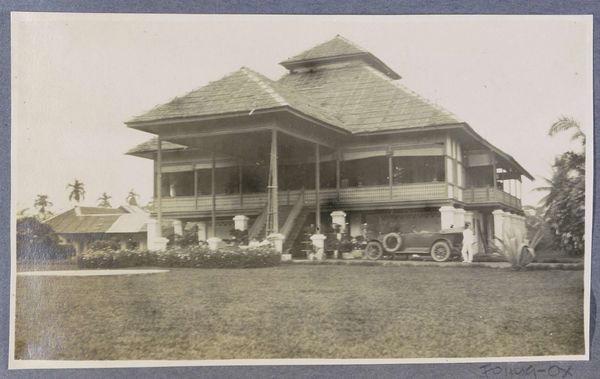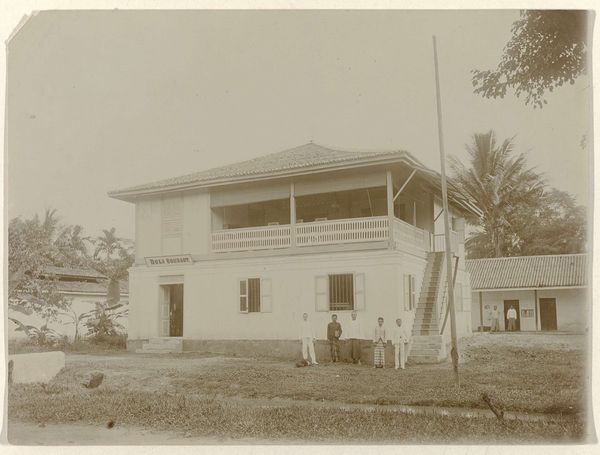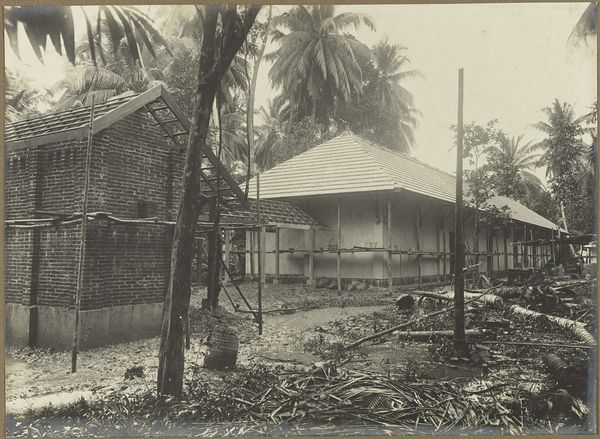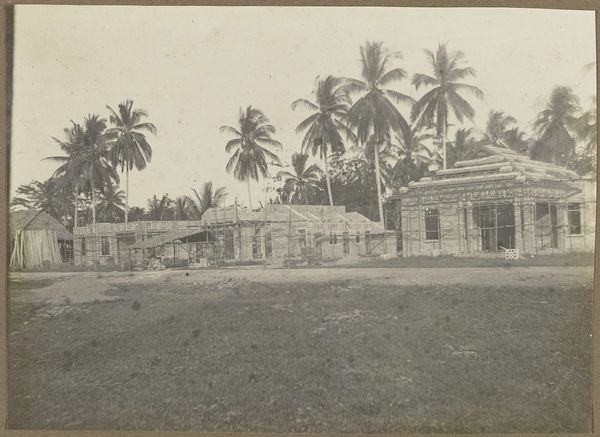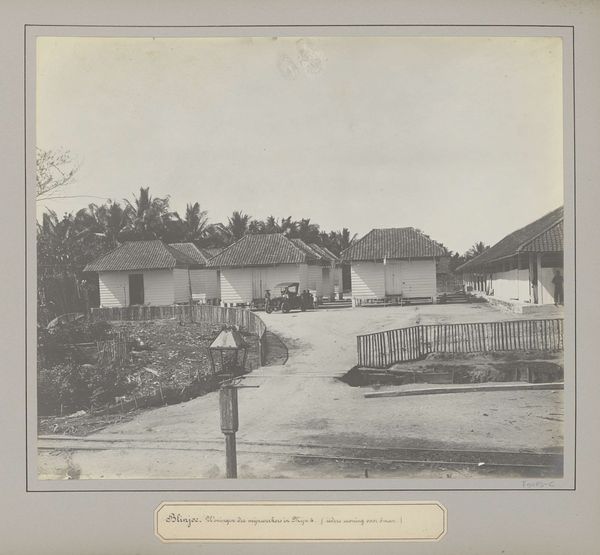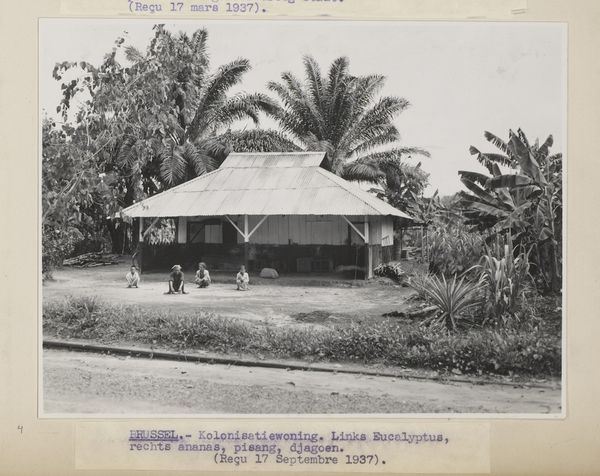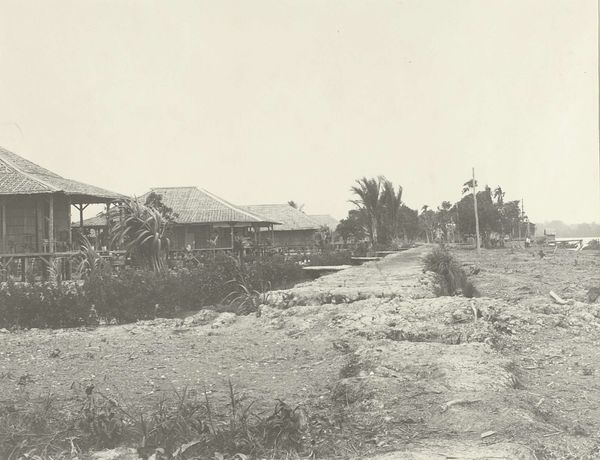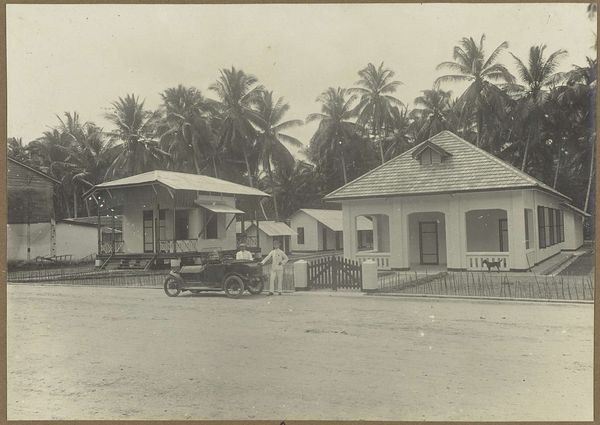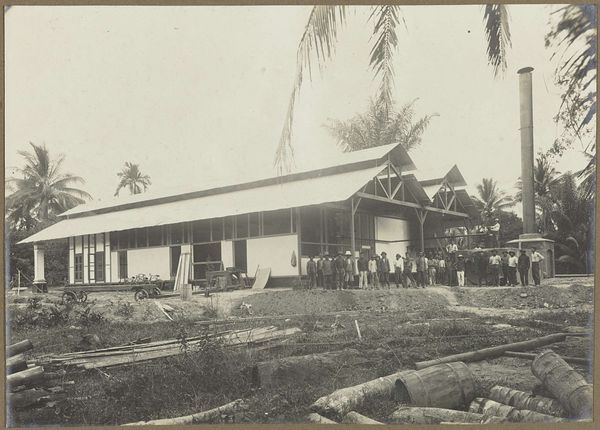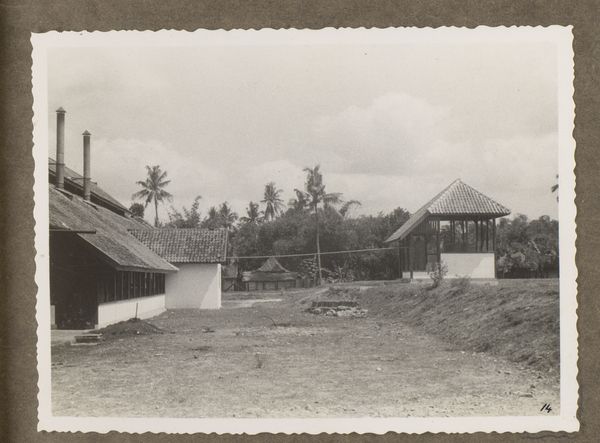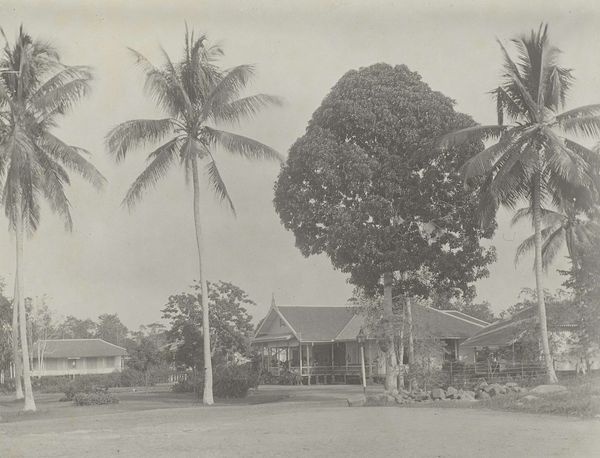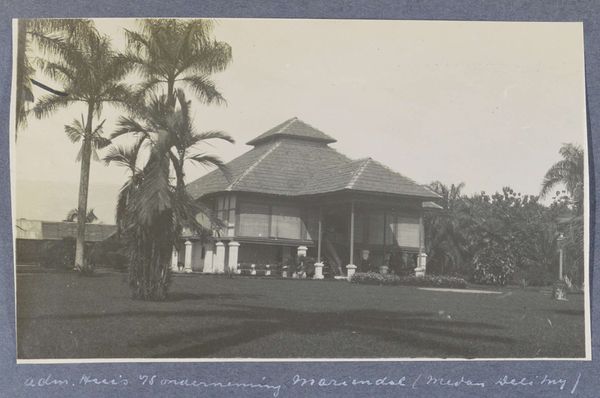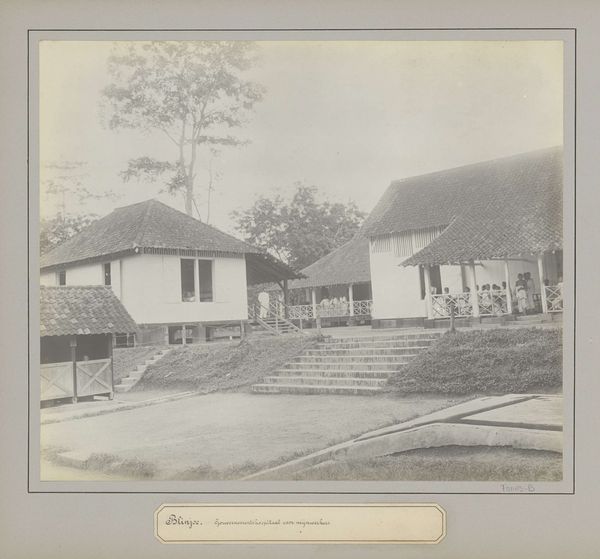
Exterieur van het huis van de assistent van de onderneming Batang Serangang op Sumatra c. 1900 - 1920
0:00
0:00
anonymous
Rijksmuseum
photography
#
still-life-photography
#
appropriation
#
landscape
#
photography
#
orientalism
Dimensions: height 74 mm, width 130 mm
Copyright: Rijks Museum: Open Domain
Curator: What immediately strikes me is the play of light and shadow. There’s a stillness, a quietude, despite the lush foliage pressing in around the structure. Editor: That stillness perhaps belies a more complex story. This photograph, entitled “Exterieur van het huis van de assistent van de onderneming Batang Serangang op Sumatra”, was taken sometime between 1900 and 1920, and is now held at the Rijksmuseum. The photographer remains anonymous. Curator: Knowing its origin, that colonial context, re-frames the composition. Suddenly the manicured lawn in the foreground, the imposing two-tiered roof become symbols of power, of imposed order. It makes the landscape around it feel less serene, more claustrophobic, as though nature itself is a force to be suppressed. Editor: The photograph uses framing to reinforce those power dynamics you've described. The architectural details like the columns and precise geometry of the roof are strongly contrasted with the chaotic jungle surrounding it. Curator: It becomes a visual study of colonial dominance, this photograph. The title itself, specifying the residence of an assistant, underscores the hierarchies at play. Editor: Yes, the interplay of architecture and landscape emphasizes both the constructed nature of colonial spaces and the subjugation of the indigenous environment. You almost get the sense of staged serenity that conceals the actual imbalances. Curator: Even the greyscale tones seem to amplify this, muting the potential vibrancy of the landscape, creating a sense of distance. Editor: Indeed. It also makes you question the gaze behind the lens—the agenda of the photographer, and for whom this image was intended. What stories are absent? Curator: Exactly. Thinking about this photograph reminds me of postcolonial literature. There is an unacknowledged tension between the idealised facade and lived experience of those affected by the situation. Editor: By considering formal elements of the piece in the context of its background we reveal important insights on the social framework that surrounded it. Thank you. Curator: Thank you.
Comments
No comments
Be the first to comment and join the conversation on the ultimate creative platform.
